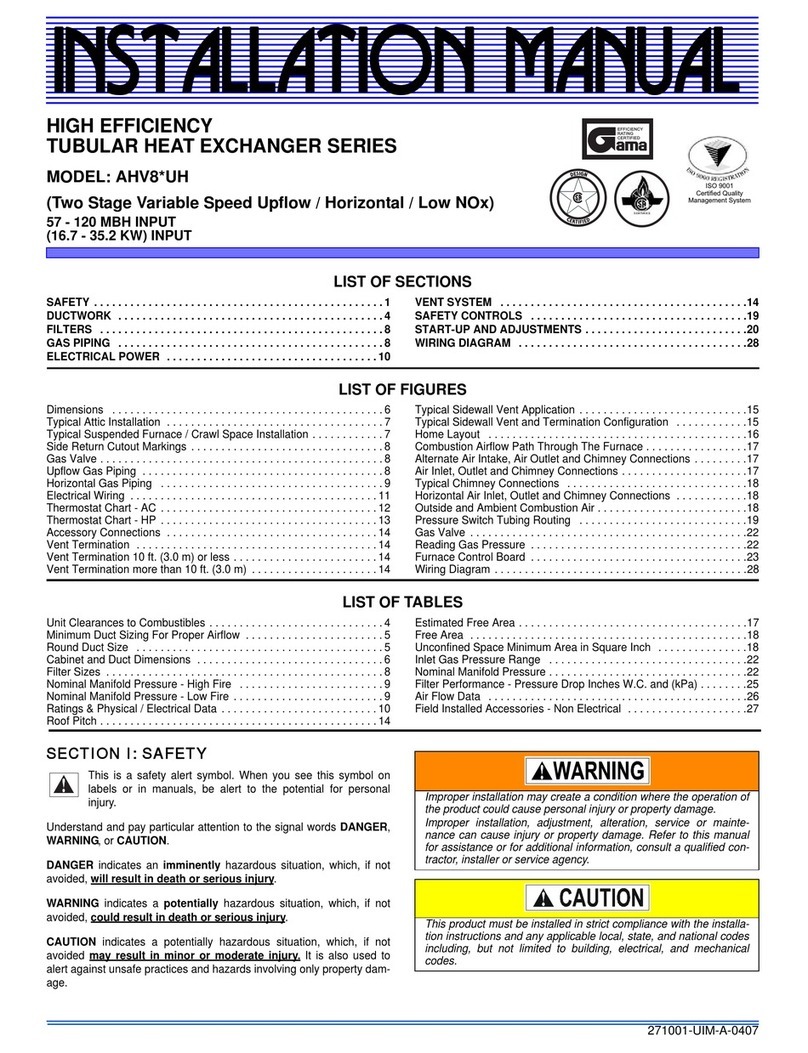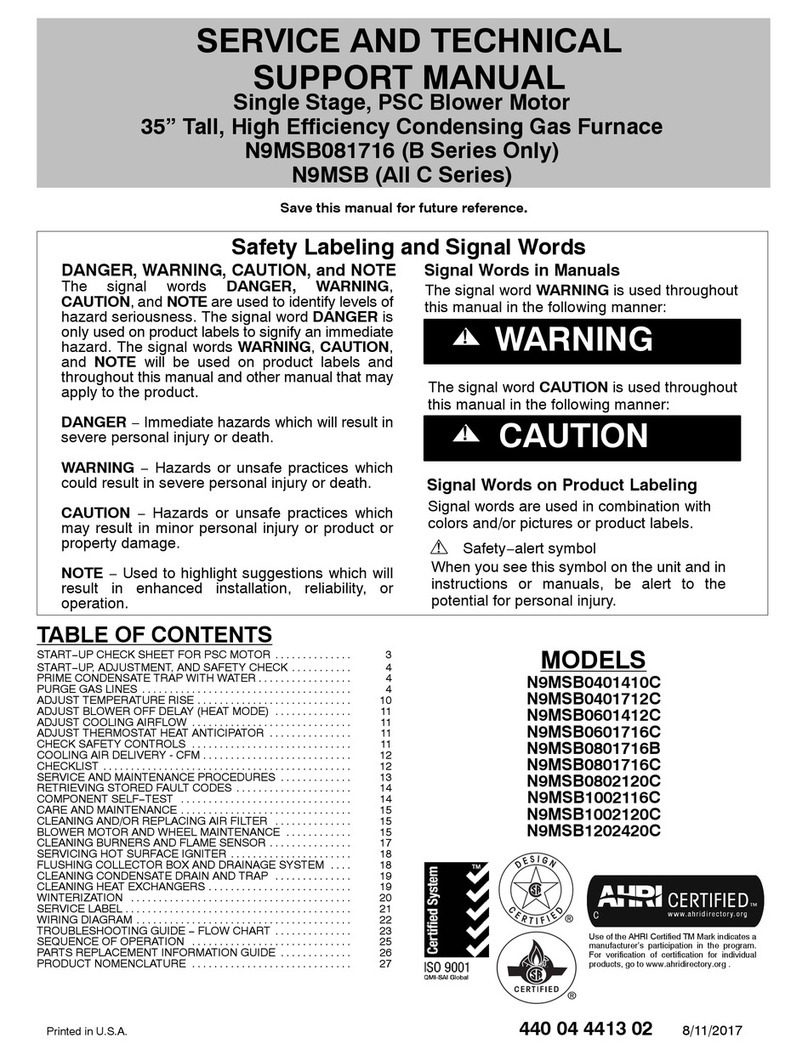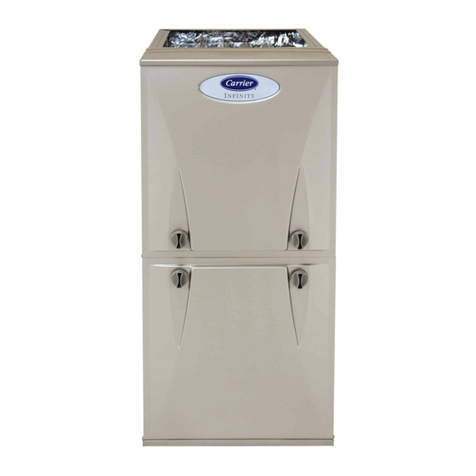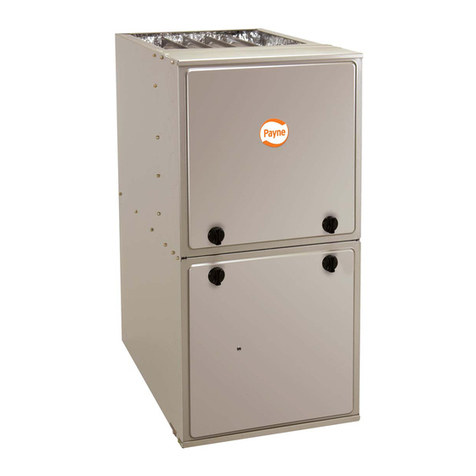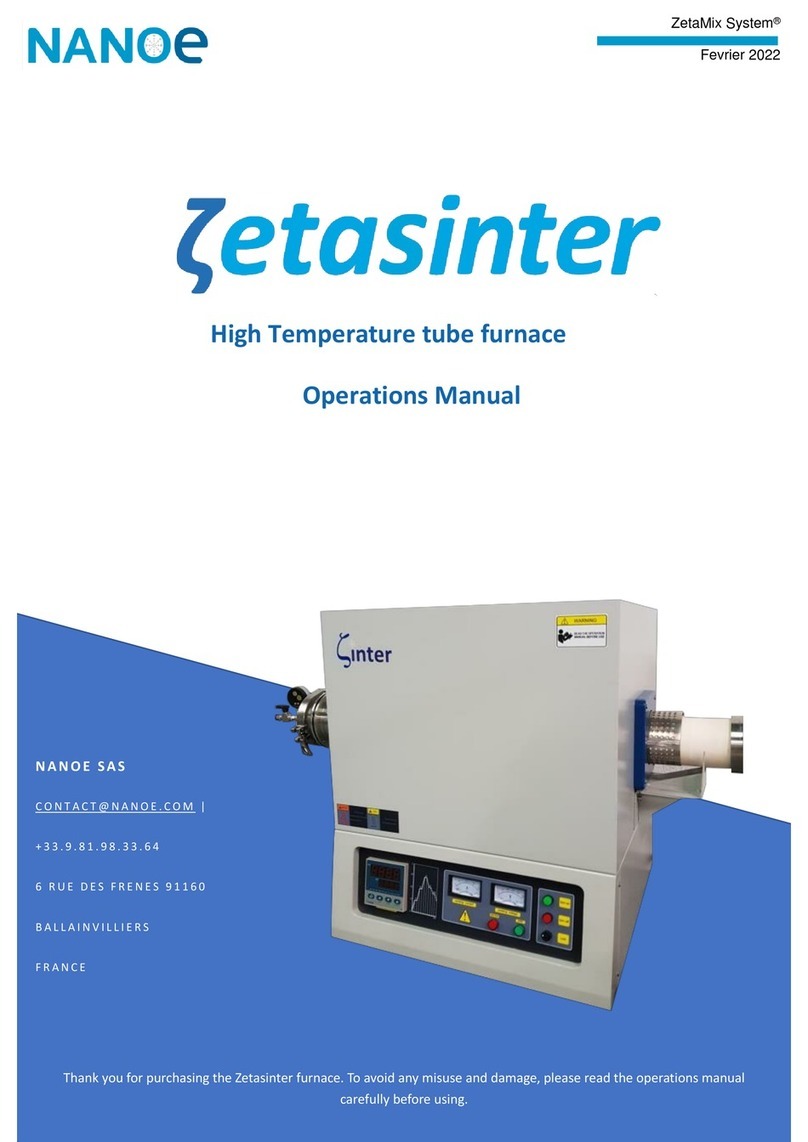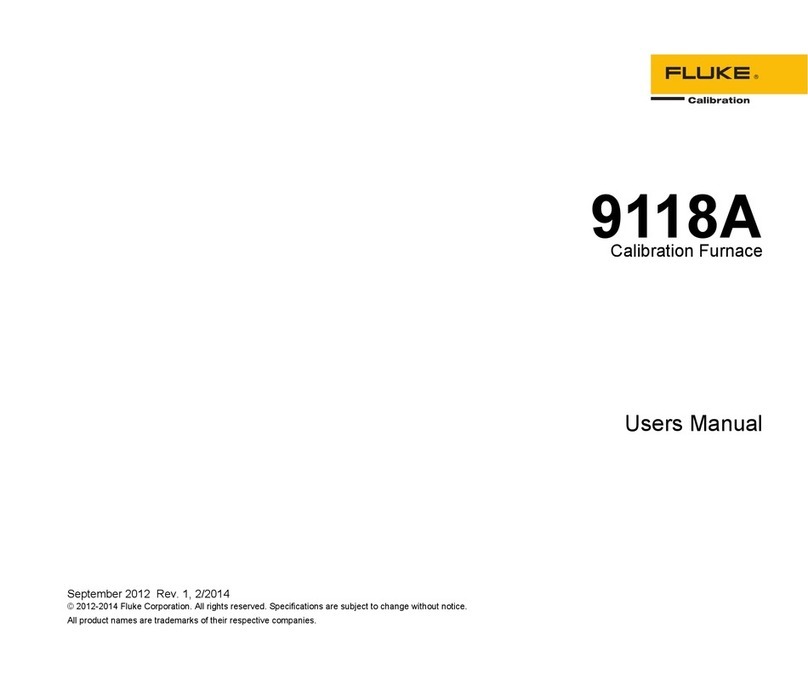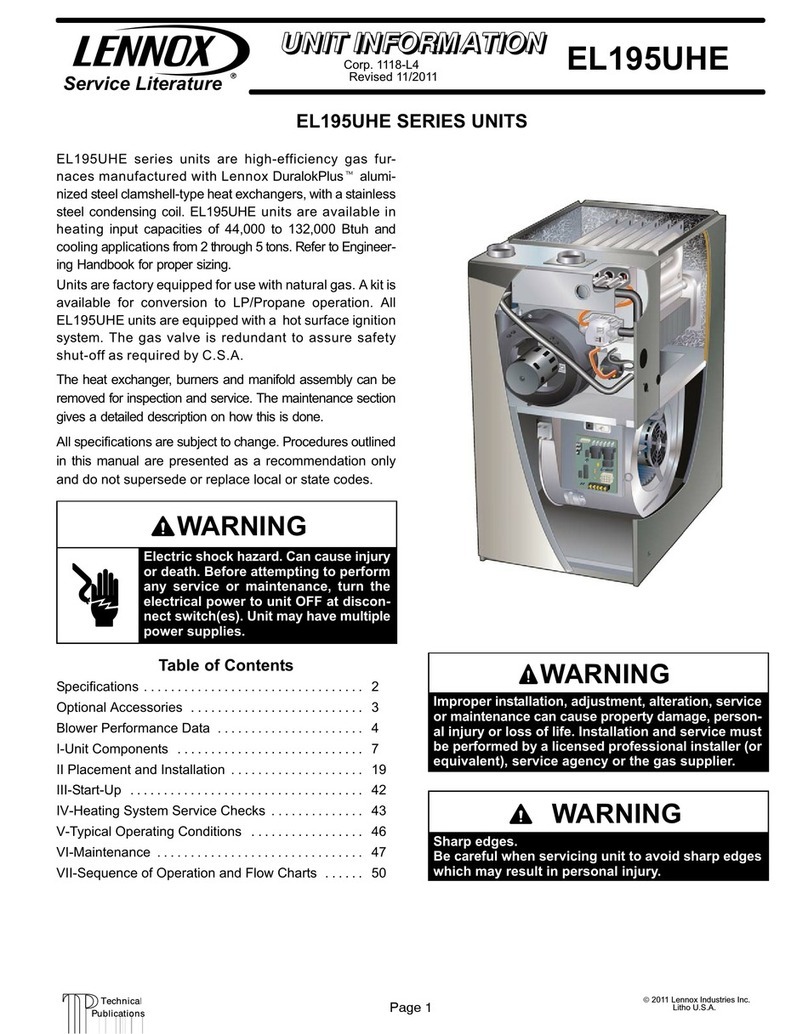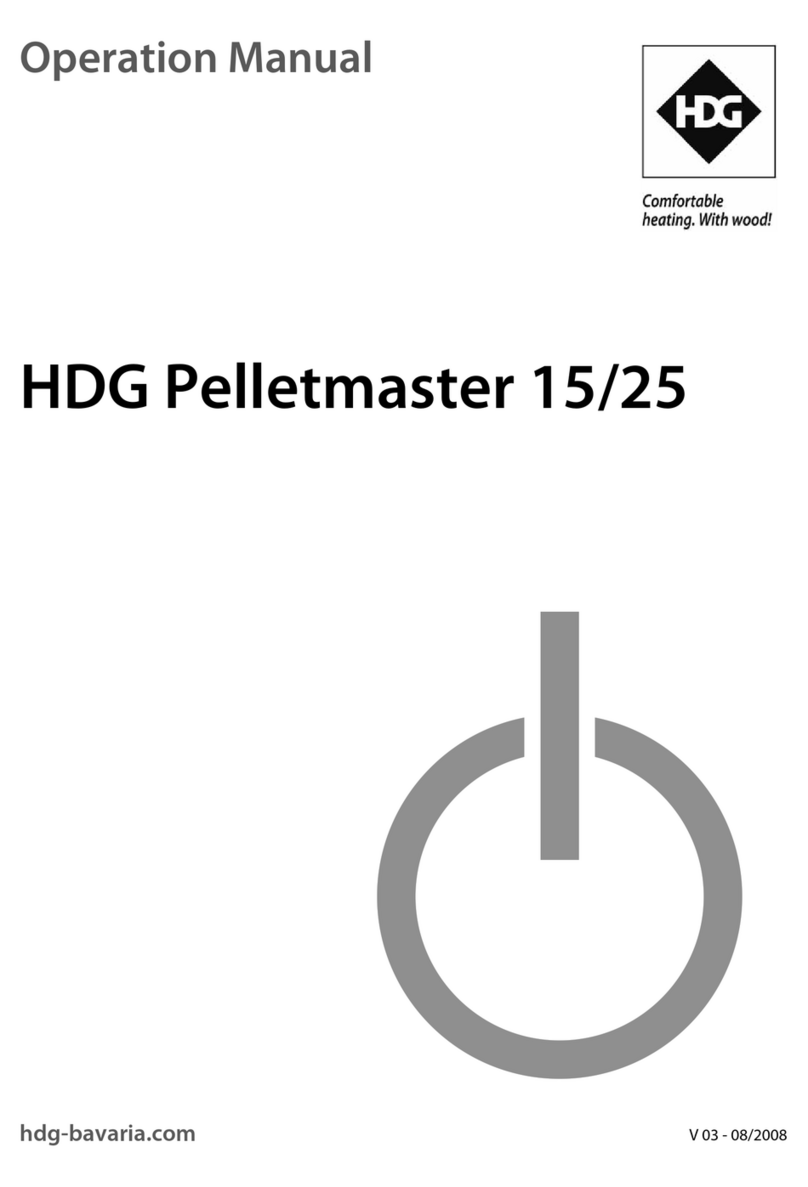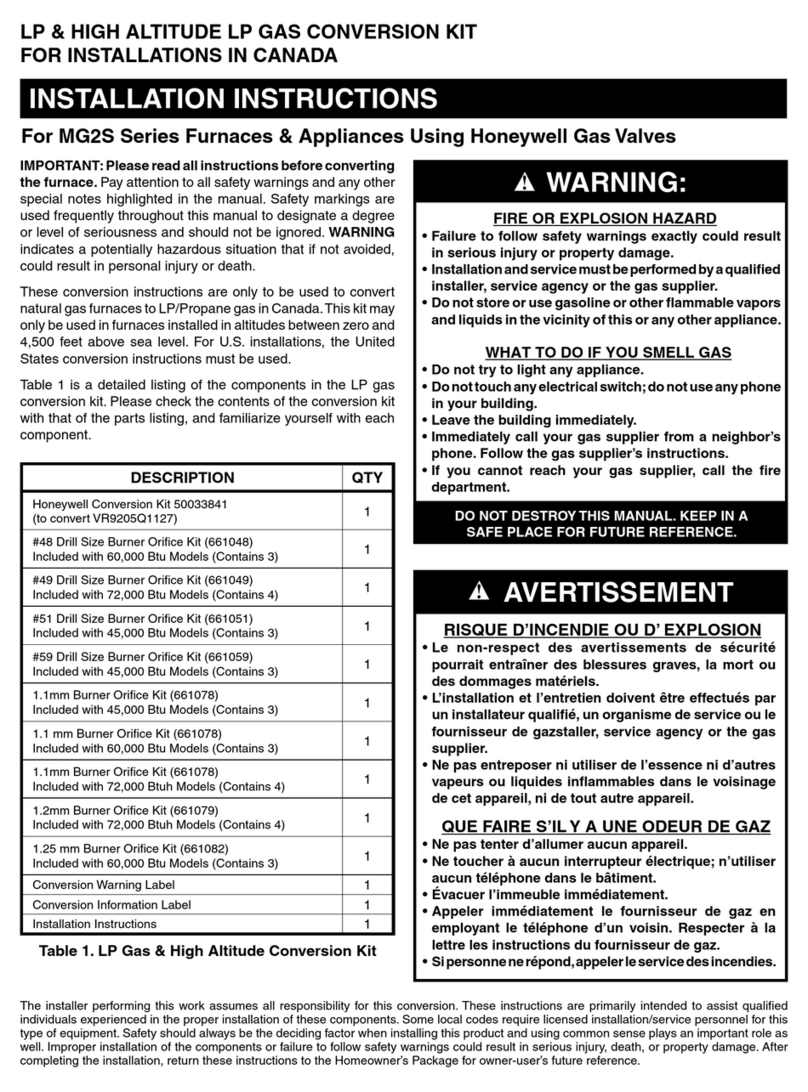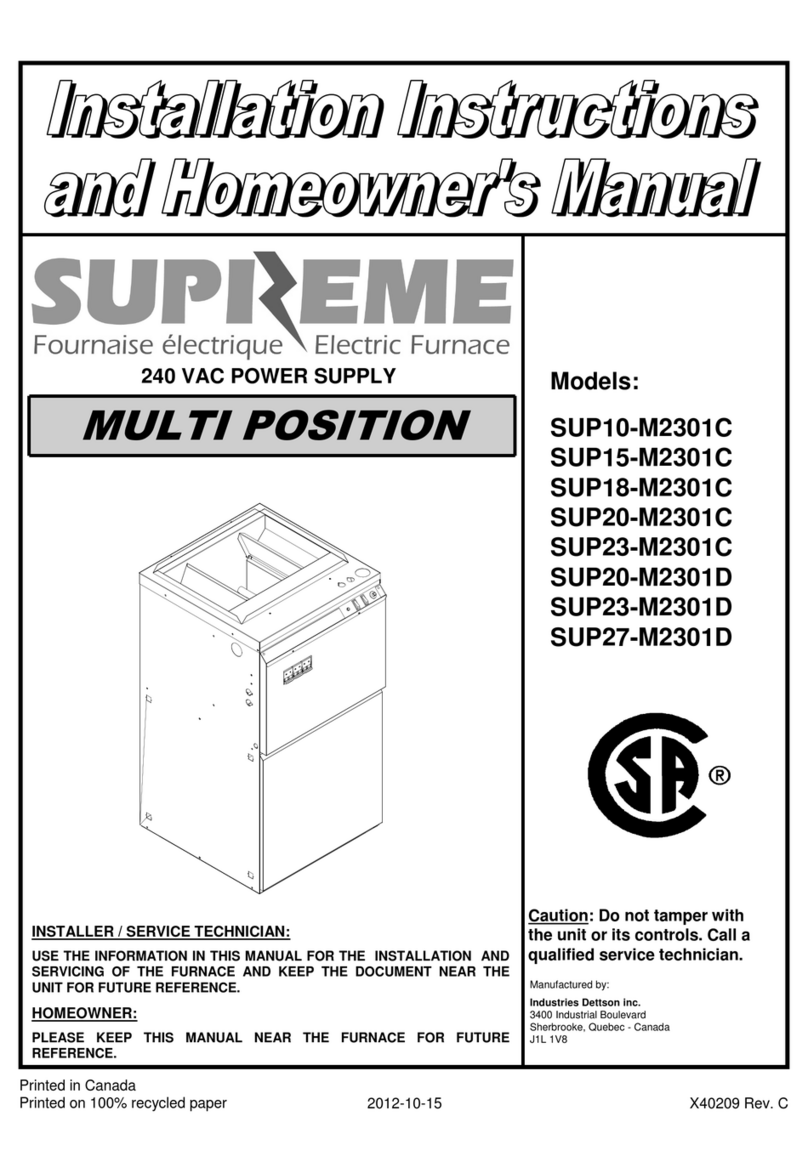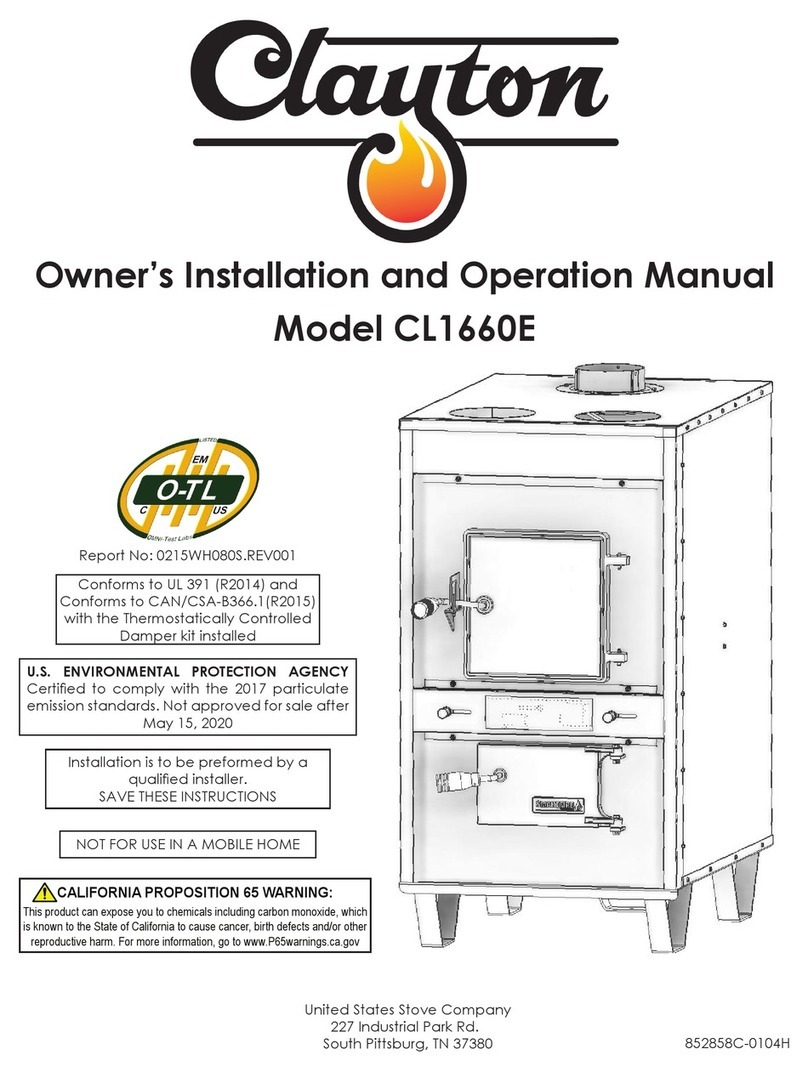
-3-
INTRODUCTION
Thank You for your purchase of a U.S. Stove Coal Burning External Furnace. Your decision to buy our Clayton
Furnace was undoubtedly reached after much careful thought and consideration. We are very proud you chose
this furnace and trust you will receive the comfort and economy that others realize when heating with a U.S.
Stove product.
Your dealer is important in your experience with the furnace not only with the purchase, but for recommendations
for professional installation for your home. The qualied professional installer has been expertly trained in solid-
fuel furnace installation to assure the safety and comfort for your family while saving you money. Trust your
experienced installer. They are specialist in this eld.
IMPORTANT
Before installing and using your furnace, please read the following pages thoroughly and carefully. If you follow
the instructions, your furnace will give you safe and more dependable service for years to come.
• Check your local codes. This installation must comply with their rulings.
• This is an outdoor hot air furnace and must NOT be installed inside the home or a building.
• This furnace must be connected to a 110 volt Ground Fault Circuit Interrupter (GFCI) outlet suitable for
outdoor use.
• A back-up generator, 2,000 watts minimum, is recommended in case of a power failure.
• Always have a properly functioning smoke or ionization detector and a CO detector installed in your home.
• To prevent injury or damage, do not allow anyone who is unfamiliar with the furnace to operate it.
• Spend adequate time with your furnace to become well acquainted with the different settings and how
each will affect its burning patterns. It is impossible to state just how each setting will affect your furnace
because of the variations in each installation.
DISCLAIMER NOTICE
The BTU ranges and heating capacity specications are provided as a guide and in no way guarantee the
output or capacity of this unit. The actual BTU output depends on the type of fuel being burned and its conditions,
the thermostat setting, the draft adjustment and the chimney to which the unit is attached. The actual area
that this unit will heat depends on factors such as the conditions of the building, heat loss, type of construction,
amount of insulation, type of air movement, the location of the unit and more importantly the duct work and
return air facility.
Warning:
Do not alter this appliance in any way other than specied in these instructions. Doing so may void your warranty.
GENERAL INFORMATION
Your 1600EF furnace comes ready for installation. No assembly required. Unpack your furnace and insure that
there is no shipping damage. If damage exist, please contact your dealer immediately. Review the items included
with your furnace located inside the rebox.
1 - 10” Starter Collar
1 - 12” Starter Collar for Cold Air Return
8 - #10 x 3/4 Screws w/ Sealing Washer
1 - Literature Package
This furnace may be installed as a Stand-Alone Central Furnace or as a Supplementary Furnace in the US only.
For Canadian installations, it may be installed as a Stand-Alone Central Furnace Only.
If installed as a Central Furnace, this unit will have it’s own central ducting system and will essentially be your
primary heat source. If installed as a Supplementary Furnace, the 1600EF will assist an Electric, Gas or Oil Fired
Furnace in heating your home by utilizing the existing furnace’s duct work system. The 1600EF must not be wired
in conjunction with the existing furnace. The outdoor furnace may be operated with the supplied wall thermostat
or a 24 volt thermostat that you supply yourself.
The furnace should be placed outdoors on a level noncombustible base, preferably a 4’ x 8’ concrete pad, as
close to the home as clearances to combustibles will allow. If locating the furnace more than 10 feet away from
the home, a minimum of 6 feet of Class “A” HT 2100 All Fuel 6 inch chimney pipe is required - Do not place the
furnace more than 40 feet away from the home. Maintain all clearances stated in this manual.
Class “A” HT 2100 All Fuel 6” Chimney Pipe is recommended for optimum performance and can be purchased
from your local dealer. A Chimney Base Plate should be installed over the ue outlet and sealed to maintain
weather resistance. A 2” clearance to combustibles must be maintained from the pipe. We suggest using either
Simpson Dura-Vent or Metal Fab chimney products for your installation.
If you choose to use single wall stainless, the ue temperatures will be reduced which promotes the formation
of creosote, possibly creating a re hazard. If you use single wall stainless pipe, the minimum clearance to
combustibles is 20”.
